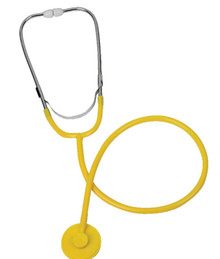
Dispos-A-Scopt Nurse Stethoscope w/Chrome Binaural
DMI
$16359
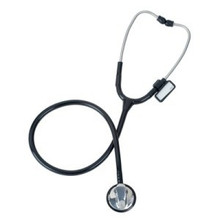
Signature Series Low Profile Cardiology Stethoscope
Briggs Healthcare
$9450
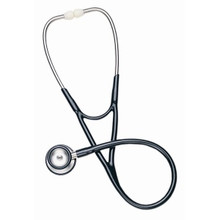
Signature Series Cardiology Stethoscopes
Briggs Healthcare
$7875
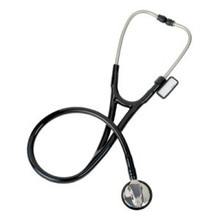
Signature Series Low Profile Adult Stethoscope
Briggs Healthcare
$7500
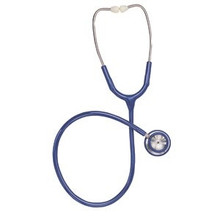
Signature Series Stainless Steel Stethoscope
Briggs Healthcare
$3360

Self Monitoring Home Blood Pressure Kit with Unattached Stethoscope
ReliaMed
$2110
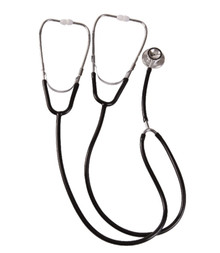
Dual Head Teaching/Training Stethoscope for Two-Person Use
Mabis Healthcare
$1953

LEGACY Sprague Rappaport-Type Adult Stethoscope
Briggs Healthcare
$1750
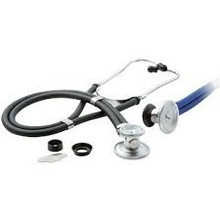
Sprague-Rappaport Type Stethoscope with Accessory Pack
ReliaMed
$1375

Caliber Series Dual Head Stethoscope, Blue
Mabis Healthcare
$1247
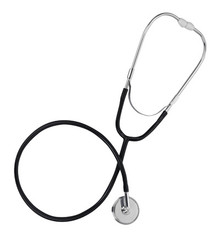
Bowles Stethoscope w/Binaural and Chrome-Plated Chestpiece
Mabis Healthcare
$841

Spectrum Series Lightweight Nurse Stethoscope
Mabis Healthcare
$783
In the busy world of healthcare, there's a small but powerful tool that often goes unnoticed – the stethoscope. Though it appears straightforward, it's a significant deal. It aids physicians and nurses in understanding what is going on within our bodies, which is critical for providing us with the best possible treatment.
This post is all about why having the best stethoscope matters. We'll talk about how stethoscopes have changed over time, why they're so useful for diagnosing and keeping tabs on patients, what makes a stethoscope great, and how technology is making them even better.
Let's get started!
In the world of healthcare, the stethoscope is an iconic tool, but it's evolving. Traditional stethoscopes have been around for ages, relying on sound conduction to hear bodily sounds. They're simple and reliable but might struggle with faint sounds and background noise.
The high-tech versions of electronic stethoscopes use microphones and offer features like noise reduction and sound amplification. They're excellent at catching subtle murmurs and other critical cues, even in noisy settings.
The choice between traditional and electronic stethoscopes boils down to simplicity vs. advanced features. Traditional stethoscopes are dependable and require no power, while electronic ones offer enhanced diagnostic capabilities but need batteries. The decision depends on a healthcare provider's specific needs and preferences. Each has a function in modern medicine.
Whether you're a nurse, cardiologist, or general practitioner, choosing your stethoscope is pivotal in ensuring accurate diagnoses and providing top-notch care.
So, let’s explore different types of stethoscopes, their specialties, and how to make a well-informed decision that aligns with your medical practice and budget.
A decent stethoscope typically ranges from $10 to $200. However, the cost can also based on brand, features, and intended use.
Yes, expensive stethoscopes often offer superior acoustic performance, durability, and additional features like noise reduction. They can make a significant difference in detecting subtle sounds and improving diagnostic accuracy.
The numbers 22 and 27 typically refer to the length of the stethoscope tubing in inches. A 27-inch stethoscope provides more reach, making it suitable for tall individuals or specific medical specialties. A 22-inch stethoscope is standard and fits most users.
To choose the right stethoscope, consider your medical specialty, acoustic needs, budget, and any additional features you may require. Reading reviews and getting advice from coworkers can also help you make an educated selection.
Using a stethoscope effectively doesn't require special training, but it's essential to familiarize yourself with its components and practice proper placement on the patient's body. Ensure a quiet environment for accurate listening, and be patient as you develop your auscultation skills through practice.
To clean and maintain your stethoscope, wipe down the chest piece and ear tips with a damp cloth or alcohol wipes after each use to prevent the spread of germs. Avoid submerging it in liquid. Regularly check for tubing cracks or wear, and replace parts to ensure optimal performance.